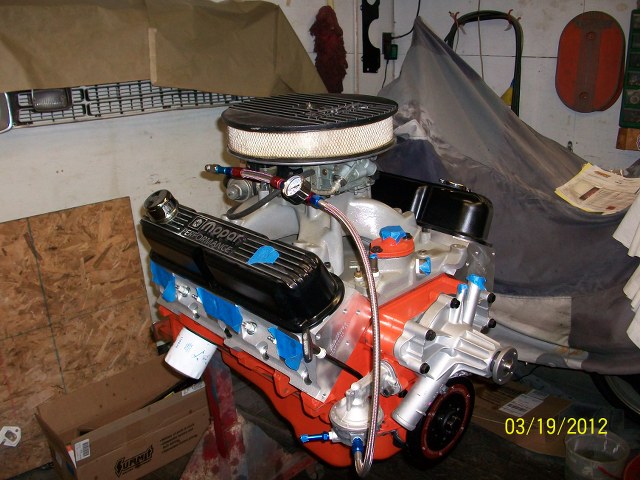DionR
Well-Known Member
I wish Mopar had put together a “car” version of the Magnum. Something that wasn’t truck oriented and didn’t need gobs of low end torque. Something that would pull to 5500-6000 RPM, rather than run out of breath at 4800 like they do with the stock EFI intake.
I bet 345 horsepower would have been easy. I know it’s not hugely different than what the Dakota R/T guys build, and I know they are making well over that.
I’ve been dying to try making a different intake, but don’t really have the equipment. I’d like to take the beer barrel intake and drill a 3”-3 1/2” hole starting in the top front of the intake all the way back to the rear wall, horizontally, cutting through all of the intake runners. Then weld a mount over the hole in the front for an LS throttle body. Come up from the bottom and cap the runners to make the plenum smaller and to get rid of the plenum plate issues. Then maybe knock out the extra runner material that isn’t connected to the cylinder head anymore, just to make it lighter and cleaner. Lastly, plug the TB mount holes on the top.
That would make a front TB intake similar to the current practice. It would require building a new front mount assessor setup to clear room for the TB, but it’s not impossible.
Then I would mount a pair of Neon/PT Cruiser ignition coils (same as the Viper’s ran) under my new plenum and remove the distributor.
Just need a new tune in the ECU (or a new system) and a method of running a distributorless ignition (MegaSquirt and a Ford EDIS module come to mind). I bet it would make for a slick motor that made more than enough horsepower.
I bet 345 horsepower would have been easy. I know it’s not hugely different than what the Dakota R/T guys build, and I know they are making well over that.
I’ve been dying to try making a different intake, but don’t really have the equipment. I’d like to take the beer barrel intake and drill a 3”-3 1/2” hole starting in the top front of the intake all the way back to the rear wall, horizontally, cutting through all of the intake runners. Then weld a mount over the hole in the front for an LS throttle body. Come up from the bottom and cap the runners to make the plenum smaller and to get rid of the plenum plate issues. Then maybe knock out the extra runner material that isn’t connected to the cylinder head anymore, just to make it lighter and cleaner. Lastly, plug the TB mount holes on the top.
That would make a front TB intake similar to the current practice. It would require building a new front mount assessor setup to clear room for the TB, but it’s not impossible.
Then I would mount a pair of Neon/PT Cruiser ignition coils (same as the Viper’s ran) under my new plenum and remove the distributor.
Just need a new tune in the ECU (or a new system) and a method of running a distributorless ignition (MegaSquirt and a Ford EDIS module come to mind). I bet it would make for a slick motor that made more than enough horsepower.

















